Reflecting on Kenneth Branagh’s Jack Ryan: Shadow Recruit, the film’s visual effects supervisor Matt Johnson describes the pic as a throwback to the 1980s Cold War thrillers. He says that style was evidenced in the film’s storytelling – it is part, of course, of the successful Jack Ryan franchise – and so should also come through in the effects work.
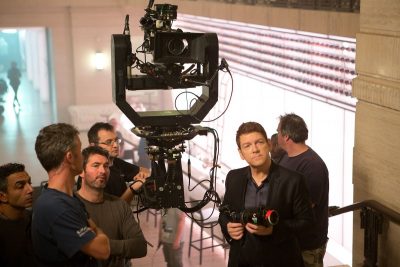
“The last thing I wanted to do was take you away from the acting/dramatic stuff that was going on by having obvious visual effects shots,” Johnson told fxguide. “It needed to feel photographed, it needed to feel as though it was shot with a camera and not CG.”
Still, since Jack Ryan – which follows a former Marine (Chris Pine) uncovering a plot to devalue American currency – features several Moscow and New York locations that could not always be filmed at their actual locations, the involvement of the film’s visual effects teams, led by principal vendor Cinesite with support from Baseblack, was crucial.
Moscow-heights
One such location was the Moscow office of Russian oligarch Viktor Cherevin (played by Branagh). It was created as a modern and spacious area with floor-to-ceiling glass windows and polished surfaces that looks over the Moscow financial district. Production filmed the office scenes at Pinewood Studios on greenscreen. Normally, having so many reflective surfaces would be something visual effects teams might look to avoid, but Johnson says they tried to use that to their advantage.
“We would take things like the floors and reflect the greenscreen,” he says, “because, they do, but then we’d also make sure that in those reflections the team put in reflections of the environment to help tie the two together. We made sure we utilized the spill to add another level of realism to reflect the sky and the buildings.”
Plates that would form views looking out from inside the glass windows were gathered by Johnson and visual effects photographer Aviv Yaron. Together they scouted various Moscow rooftops and vantage points for suitable angles, taking both hi-res stills to be collected as panoramas and also shooting with a RED for moving footage.
For the small crew, conditions on the rooftops were sometimes challenging. “I think the windchill was minus 25 when we were up on the roof,” recalls Johnson. “The air conditioning was the smell of damp cabbage, or sewage – it wasn’t the most pleasant place to be! But I always like to start with something photographic and it was the perfect environment to shoot from.”
“One of the places we shot from,” adds Johnson, “was a bizarre oligarch’s restaurant on one of the towers in the area which was a glassed-in fancy restaurant. In fact, we had to wait for some Russian billionaires to finish their dinner at two in the morning before we could go in there and photograph. I do spend an awful lot of time on rooftops. Aviv and I were going to do a coffee-table book of ‘panoramas from rooftops around the world.’”
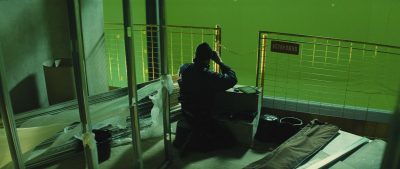
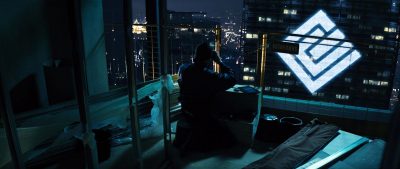
Johnson worked with the film’s visual effects editor, Matthew Glen, to create rough Avid mockups using the background stills for the initial cut. “It’s about creating a view that feels right that’s going to work with the camera angles that we have,” says Johnson, “but also gives a nice background to the characters. In the daytime views, we have all those shots looking back at Chris and you needed to have a nice balanced frame and make sure the buildings you’re putting in there would work.”
The environments team at Cinesite took the backplates and created layouts for the final exterior views – both for day and nighttime. Artists enabled some subtle parallaxing for tower buildings slightly closer and for the ones in the background by wrapping the environmental views around rough geometry.
“We set the whole thing up in Nuke afterwards to do projections,” says Cinesite environment supervisor Thomas Dyg. “What we do slightly different to some other companies is that we have almost a compositing pass in the environments department. So before handing stuff over to the compers we put all these elements we have – whether they be strictly matte painted elements or 3D elements. We put them through a pass in Nuke and render out whatever is needed in comp in terms of position passes and what not. It forces some efficiencies and lets us make sure the continuity holds up.”
Cinesite 2D supervisor Helen Newby faced not only the challenge of reflective surfaces but also making the backgrounds look as if they had been shot in situ. For this – as well as for other environment shots throughout the film – Newby says the RED footage proved crucial in constructing the comps. “This is one of the things when you’re doing a matte painting,” she explains, “in the comp you’re always trying to put some life back into it. There’s always a request from the director or visual effects supervisor to put in say a flock of birds – the classic – or something moving. So we had the luxury of being able to use this footage with something moving already in it.”
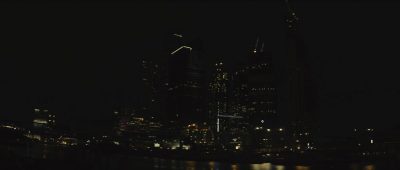
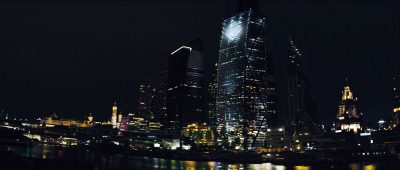
Exterior views of the office tower were also Cinesite creations. “The building itself was a 3D model but we painted on top of that,” says Dyg. “It was a fairly complex building that we built because it was meant to be used in a lot of other shots, but many of those were cut from the movie. In the end we rendered it out and matte painted on top. For the nighttime version, the challenge was to make it stand out from the other buildings because at night they’re all just boxes with lights on them. It received not just a logo at the top of the building but also all sorts of ‘Christmas’ lights.”
Invisible effects throughout
Cinesite’s work included several other sequences. Towards the end of the film, Ryan and his partner Cathy (Keira Knightley) are ushered to the Teterboro Airport in New Jersey. Principal photography actually took place at RAF Marham in Norfolk, UK, with Cinesite contributing a CG helicopter and a Boeing 737 made from stills to the shots.
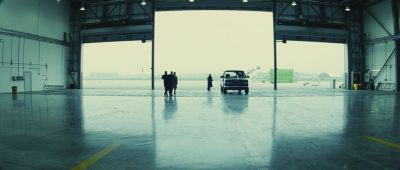
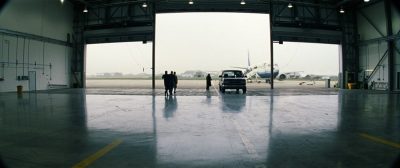
The studio also crafted a completed view of the new One World Trade Center since it was filmed under construction. Other shots were made up of building extensions or enhancements and numerous clean-ups, some that proved especially challenging. “We shot in Liverpool for the car chase sequence which had British road markings and road signs,” describes Newby. “You can’t get rid of everything when you’re shooting so we had to do quite a bit of clean-up – number plate replacements and road markings. They were quite complicated because it’s a fast-moving sequence and there was a lot of road to cover in that car chase.”
Crisis averted
In the film’s finale sequence, Ryan discovers a bomb in a fake police van, which he chases and ultimately crashes into New York’s East River. The bomb explodes underwater right next to the Brooklyn Bridge. Johnson explains that many separate pieces made up the van chase, including plates filmed on Wall Street and elsewhere in New York, along with a greenscreen ‘box’ for scenes of Pine fighting in the rear of the van, and practical photography filmed with six cameras of the vehicle launching into the water.
Catch a glimpse of the explosion in this TV spot.The explosion was realized as a fluid sim by Baseblack. “For reference,” says Johnson, “I found a lot of footage of depth charges and underwater explosions filmed from the surface. We staged it slightly off-center – if you were filming the explosion from a helicopter, you wouldn’t know where exactly that’s going to be, so having that intentionally off to one side just makes it instantly more real – it’s not like an staged shot. And on the Brooklyn Bridge there are little waves that hit all the columns which I thought was great.”
Images and clips copyright © 2014 Paramount Pictures. All rights reserved.
